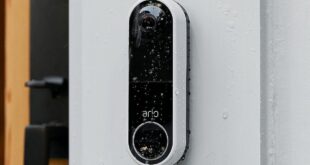SimpliSafe home security systems can be easily tailored to your needs. Just simply add or subtract hardware and equipment as you please.
When choosing a home security system for your home, you may be tempted to start by deciding between a DIY setup or one that is professionally installed and monitored. When you consider the equipment, installation, monitoring options and other features you want, you’ll probably reach a DIY-versus-pro system decision along the way. Here are some more parameters to consider when shopping around for home security systems:
Equipment and installation
Do you just need to keep watch over your entryways? A good video doorbell for your front door and an outdoor camera covering the back may be all you need; easy to install and monitor yourself. If you want to keep closer tabs on your home inside and out with 24/7 monitoring and quick access to emergency response services, you’ll want a more robust system. DIY and professional brands offer home security bundles with most, if not all, of the equipment you’d need to get started and the ability to add single devices as needed.
Most home security devices are compatible with Alexa and Google Home smart hubs, but if you prefer Apple HomeKit or another smart home ecosystem, you may have to do a bit more shopping and comparing to find a system compatible with your existing smart home devices. Don’t fret over compatibility too much as Matter will make it easier to connect previously noncompatible devices (although it hasn’t quite come for security cameras yet).
Keep in mind all that equipment will need to be installed. While there isn’t much to installing a security camera or even a wired video doorbell, whole-home systems can be a bit more demanding to install and set up. Some are DIY-friendly and use adhesive to position devices without leaving permanent marks, but not all systems do this. If you’d rather leave that to an expert and have them walk you through how to use the system, a professional home security service may be the way to go.
Monitoring, alerts and emergency features
Arlo’s app is simple and intuitive to use.
Virtually all home security systems allow for self-monitoring, likely via an app on your phone. They’ll also send you push notifications when there’s an event, such as when a package is delivered to your doorstep.
Consider whether you want to be in charge of all the monitoring or if you’d like some support. A professional system will come with 24/7 monitoring, but you may be able to add professional monitoring to your DIY system for a fee, depending on the brand you choose.
More advanced features, such as facial recognition, glass break sensors and communication with emergency services may not be available from all manufacturers and devices. Consider the level of monitoring you want, and who you want to do it, along with the emergency response options, when choosing a home security system.
Costs, upfront and ongoing
We listed “cost” last here for a reason. A complete home security system will likely cost you at least a couple of hundred bucks, so be prepared for that. There’s the potential to spend lots more on equipment, or a lot less. Also, keep in mind that the size of the system greatly affects the cost. Starter systems like many we listed here typically cost between $150 and $300, and allow you to add other compatible devices over time. Larger systems with 10 devices or more will cost at least several hundred dollars and can go up to $1,000 or more, depending on the tech that’s included.
Ongoing costs can carry a bit more weight when choosing the best security system. Expect ongoing monthly fees from a professional service and possibly a contract to lock you into those fees for a year or two (although we favored picks without a required contract). Signing a contract may not be ideal, but it may also come with free equipment or installation and lower upfront costs.
If you’re comfortable with self-monitoring, DIY systems may not come with any ongoing costs. Monthly subscriptions (without a contract) for cloud storage, enhanced features and possibly even professional monitoring are typically an option with DIY systems, often for lower monthly fees than professional services.
 synnbiob
synnbiob
